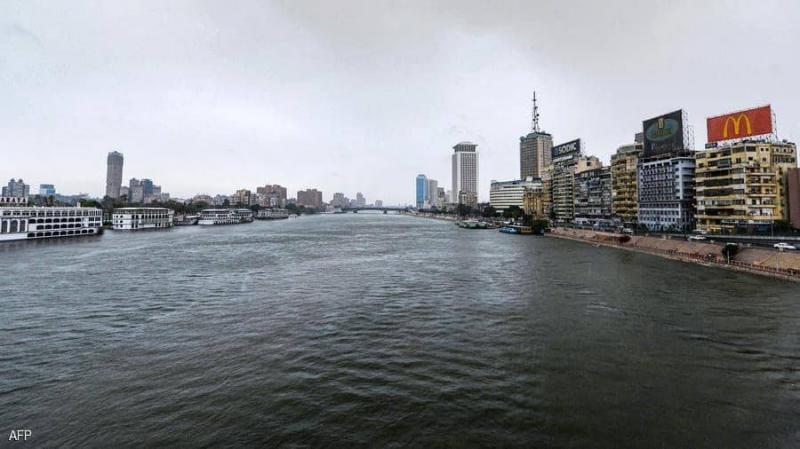Egypt has proposed to the U.S. side projects to transform the Nile River into an international navigation route extending from the Mediterranean Sea to Lake Victoria, amid ongoing disputes between Cairo and upstream countries, primarily Ethiopia, over water sharing of the river. This was discussed during a meeting between Egypt’s Minister of Water Resources and Irrigation, Mohammed Abdel Aty, U.S. water expert Matthew Parks, Deputy U.S. Ambassador to Cairo Nicole Schams, and other embassy representatives.
The Egyptian Ministry of Water Resources and Irrigation stated that the project aims to turn the river into a "navigation artery" connecting Nile Basin countries, comprising a shipping route, a road, a railway line, as well as electrical and information connectivity, ensuring comprehensive development for the involved nations.
According to Abbas Sharaki, a professor of geology and water resources at Cairo University, negotiations between Egypt and Ethiopia have been serious since 2011, with Ethiopia unwilling to accept any alternatives regarding the Grand Ethiopian Renaissance Dam. He noted that in May 2018, a meeting involving water and foreign ministers and intelligence chiefs from Egypt, Sudan, and Ethiopia resulted in an agreement to form a neutral scientific committee from the three countries and create a development and infrastructure fund. However, he pointed out that funds could only be operated in this development fund after reaching basic agreements regarding the dam, which Ethiopia has completely rejected, despite its economic crisis and need for Egypt. This Ethiopian stance is characterized by arrogance, meaning that electrical connectivity will only occur after addressing the fundamental issues of the dam.
Transportation connections could be established between Egypt and Sudan via land and rail, as well as among Nile Basin countries through a shipping corridor in the Nile River linking Lake Victoria to the Mediterranean Sea, benefiting countries like Kenya, Tanzania, and Uganda. However, Ethiopia will not be involved, as this pertains to the White Nile. The Blue Nile is a strong river with steep descents, making navigation impractical.
He explained that "tropical African countries face challenges with overland transport, as roads can be cut off by rain, but boats can navigate rivers even in rainy conditions." However, the shipping connection will face obstacles due to the route's length of approximately 3,500 kilometers as a straight line, increasing to about 6,000 kilometers when using the river for transport. There are dams obstructing navigation starting from Lake Victoria, making it difficult for boats to pass from the lake into the river's course. Thus, Egypt could assist African countries from Lake Victoria to the Mediterranean to make the river navigable to some extent.
He pointed out that tension between Egypt and Ethiopia, along with provocative statements from the Ethiopian side, hinders collaboration and serves as an obstacle to any Egyptian support for development in Ethiopia. Nevertheless, Egypt must continue to use its diplomatic strength to pressure Ethiopia through engagement with major global powers to compel Addis Ababa to reach an agreement with Egypt and Sudan and to abandon its obstinacy on this issue, especially given the unstable situation within Ethiopia.
Regarding the dam, he noted that any Ethiopian government seriously considering the Grand Ethiopian Renaissance Dam will recognize that the project carries high costs and is not in Ethiopia's best interest. Instead, it is used as leverage to demonstrate governmental strength and popularity. Although the Ethiopian government has heavily promoted electricity generation, it has yet to achieve this. Even if it generates electricity from the dam, the Ethiopian population will not benefit due to a lack of a proper internal electricity transmission network, resulting in electricity exports to Sudan.
Sharaki revealed that "after the dam is completed, the Ethiopian people will realize that they will not gain much from it, putting the government in a challenging position." Therefore, it is in the interest of the Ethiopian government to delay the dam's construction for as long as possible, maintaining tension with Egypt to create an internal narrative of conflict and increase its popularity through fiery statements. Thus, the dam serves as a political card for the Ethiopian government to win elections.
He considered that "the dam does not represent progress for Ethiopia and does not threaten Egypt, but the issue for Egypt and Sudan is that the reservoir is massive." It is essential to reach an agreement to prevent the storage from reaching 74 billion cubic meters—a very large volume. In the event of floods, earthquakes, or any cause that might lead to its collapse, it could result in a devastating disaster and flooding in Sudan, not just a mere flood; this is a threat that must be addressed in the upcoming period.
Regarding what Cairo should do, the international water expert emphasized that Egypt needs to leverage its relationships with Arab nations having interests in Ethiopia to exert pressure on the Ethiopian government to reach an equitable agreement on water issues. He ruled out the use of military options, as "this project is a failure for Ethiopia and will not be used for agriculture due to insufficient arable land to consume large quantities of water. Furthermore, the High Dam compensates for any water shortages, thus the impact on Egypt will be minimal."




